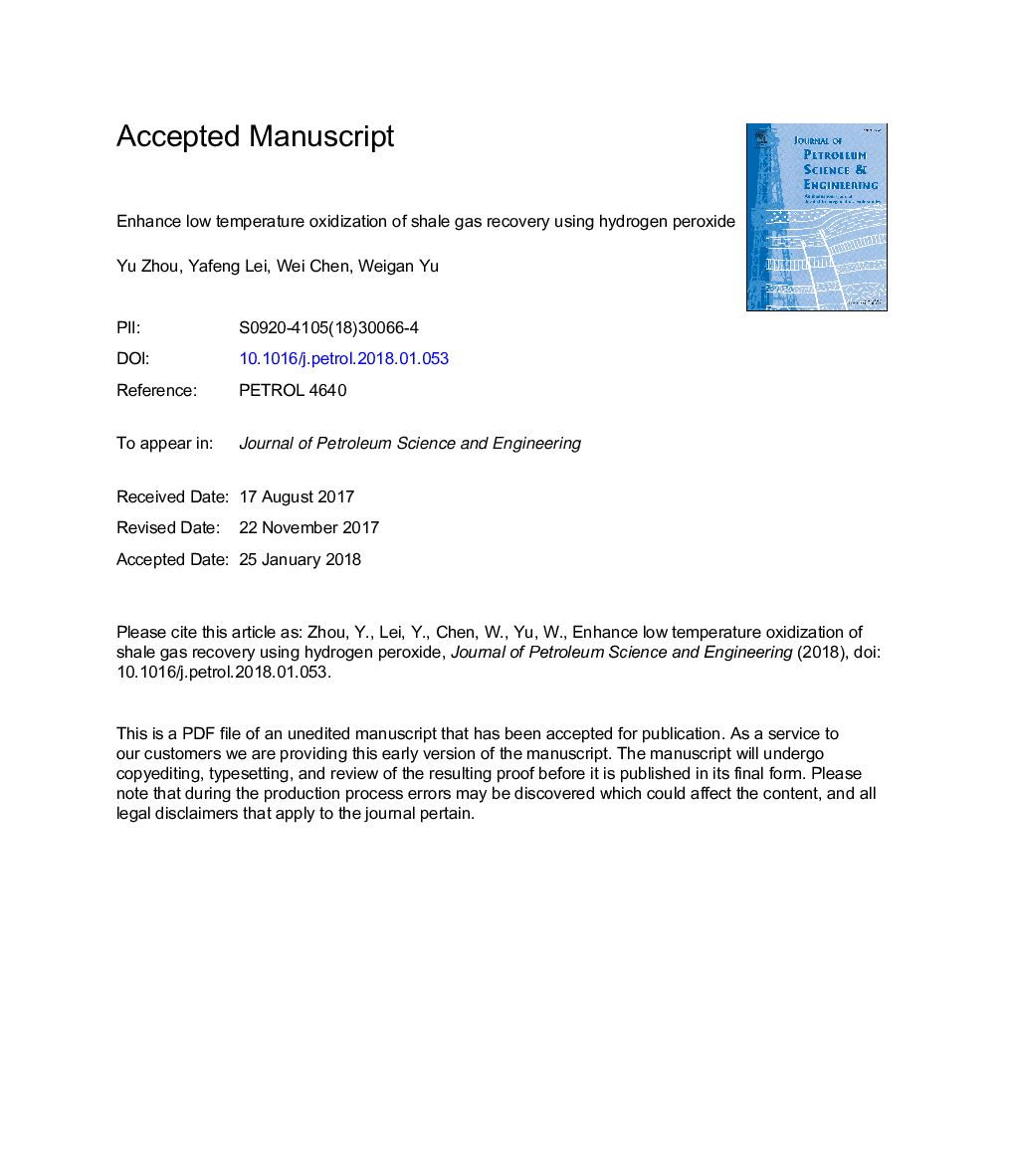| Article ID | Journal | Published Year | Pages | File Type |
|---|---|---|---|---|
| 8125242 | Journal of Petroleum Science and Engineering | 2018 | 25 Pages |
Abstract
Gas extraction from shale has been challenging due to extremely low permeability in shale formations. Recently, high temperature treatment methods were introduced to remove organic matters from shale to increase shale pore diameter and reservoir permeability. In this study, hydrogen peroxide was used as oxidizer to react with organic matters in shale samples for 6, 12, 24, and 48â¯h, respectively. X-ray diffraction (XRD) tests were employed to study the mineral compositions. Then, thermal decomposition experiments of shale samples were also conducted by the combined Thermogravimetry-Fourier transform infrared spectroscopy (TG-FTIR) technique to analyze the weight loss behaviors and gas emission in N2 environment during pyrolysis. Afterwards, the effect of pyrolysis and reaction duration on pore diameter were investigated by liquid nitrogen adsorption and desorption tests. Finally, scanning electron microscopy (SEM) images of the shale samples were analyzed to reveal pore structure change on the surface of shale samples. From the experiments, it was found that the organic matters could react with H2O2 at ambient temperature and pore diameter increased with reaction time. The mean pore diameter increased by 40% when samples were treated with H2O2 for 48â¯h. More larger pores were observed on the surface of both pyrolyzed and H2O2 treated shale samples from the SEM images. Moreover, the pyrolyzed samples have larger pores compared to the H2O2 treated samples due to the decomposition of minerals at high temperature.
Related Topics
Physical Sciences and Engineering
Earth and Planetary Sciences
Economic Geology
Authors
Yu Zhou, Yafeng Lei, Wei Chen, Weigang Yu,
